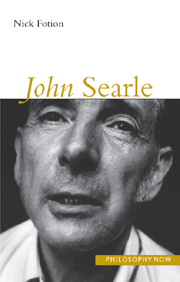10 - Institutions
from Part III - Philosophy of society and other matters
Summary
The nature of institutions
What are institutions? Certainly if we follow ordinary usage, the American and the British governments count as institutions. Within each there are other institutions such as each country's military, medical and postal services as well as each country's legislative and judicial branches. Universities, whether public or private, also count as institutions as would other large schools, various kinds of museums, galleries and libraries. Our list of institutions also likely includes large corporations and businesses, large hospitals and hospital chains, large legal groups, symphony orchestras, opera companies, major theatre groups and major “think tanks”. With each institution we are likely to associate some piece of real estate. Land, buildings or both, help us identify each one.
Searle's sense of institution is different. His sense is driven not so much by ordinary usage but by his formula for constitutive rules: “X counts as Y in C”. Searle's preferred form of the formula is not important. Other versions that help explain its meaning are as follows: “X in (context) C becomes (or changes into) Y” or better yet “X in (context) C is given status (by the group) as Y”. However it is stated, the formula allows the concept of “institution” to include much more than one might suppose. For example, Searle talks of money as an institution. But one might wonder whether money itself has that status; or whether the government is the institution and making money is just one of the functions it performs.
- Type
- Chapter
- Information
- John Searle , pp. 191 - 212Publisher: Acumen PublishingPrint publication year: 2000



